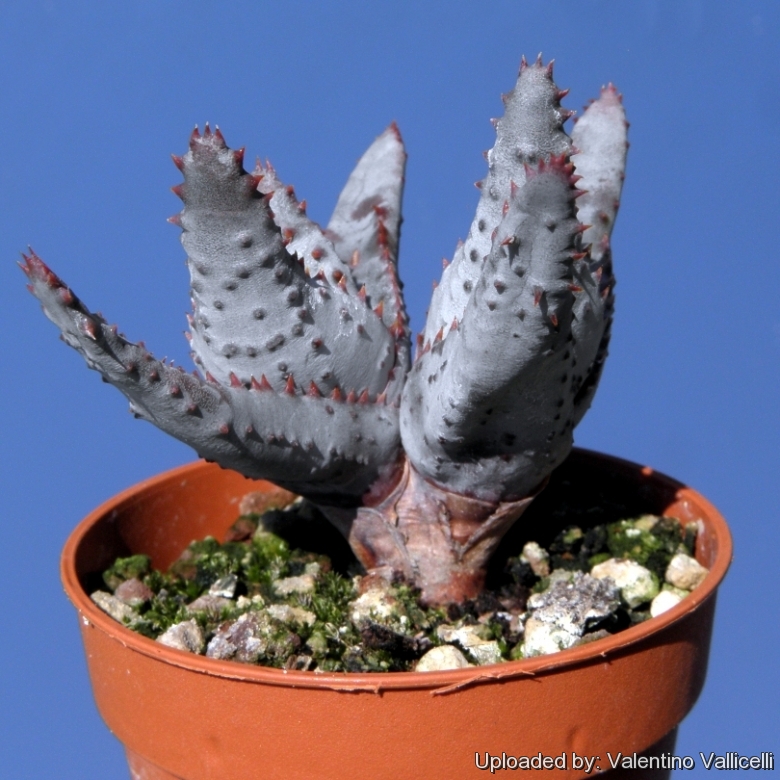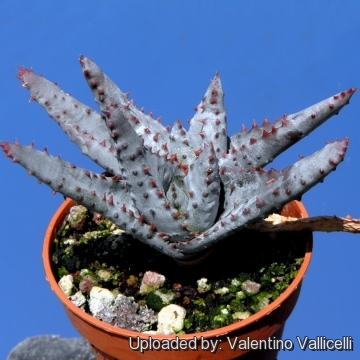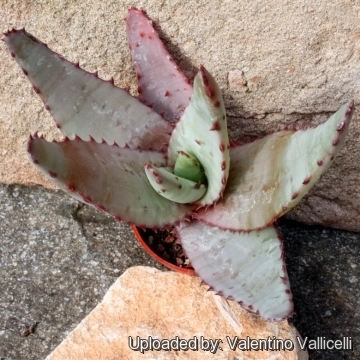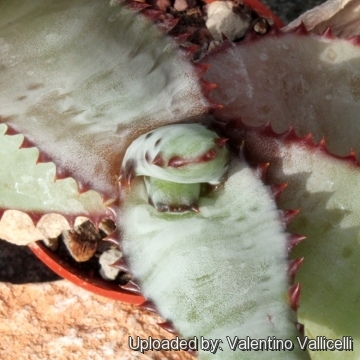
Aloe conifera Photo by: Valentino Vallicelli
Origin and Habitat: Mont Rovotary, south of Ambatofinandrano in the west Betsileo region of the Fianarantsoa Province of central Madagascar.
Habitat: Grows in rocky slopes on the dry, high plateau in crevices on eroded granite rocks, altitude 1300-1500 m.
Synonyms:
Description: It is a relatively small to mid-sized specie which even as a seedling is a splendid sight, with its intense strap-like blue-green leaves, which become red-violet in the sun.
Stem: Almost stemless or with short stem up to 10 cm usually unbranched.
Rosettes: Distichous when young (as with all Aloe species), later forming dense rosette with 12-24 leaves. Height 30-40cm, width 30-40cm.
Leaves: lanceolate-attenuate that become narrower close to the stem, tip rounded with few short teeth, 16-22 cm long x 3-6 cm wide, bluish-grey tinged reddish; marginal teeth 2-3 mm, pungent, reddish, 5 - l0 mm apart and smaller spines on the leaf underside.
Inflorescence: It has an unbranched highly unusual inflorescences, rarely with l-2 branches that stands well above the leaves, about 50 cm tall. The raceme is cylindrical, 10-15 x 3.5 cm, very dense; young raceme are very distinctive cone-like with densely imbricate bracts.
Flowers: Small yellow and scented almost covered by large floral bracts. Pedicel none.
Blooming season: The inflorescence appears in winter.
Remarks: It is similar to Aloe capitata with its glaucous grey, toothy leaves, A. conifera differs in its distinctive cone-like inflorescence.
 Aloe conifera Photo by: Valentino Vallicelli
Aloe conifera Photo by: Valentino Vallicelli Aloe conifera Photo by: Cactus Art
Aloe conifera Photo by: Cactus Art Aloe conifera Photo by: Valentino Vallicelli
Aloe conifera Photo by: Valentino Vallicelli Aloe conifera Photo by: Valentino Vallicelli
Aloe conifera Photo by: Valentino Vallicelli Aloe conifera Photo by: Valentino Vallicelli
Aloe conifera Photo by: Valentino VallicelliSend a photo of this plant.The gallery now contains thousands of pictures, however it is possible to do even more. We are, of course, seeking photos of species not yet shown in the gallery but not only that, we are also looking for better pictures than those already present.
Read More... Cultivation and Propagation: Easy to grow. In cultivation it is best suited to warm temperate climates. Plant in porous free draining soil. Water throughly when soil is dry to the touch. Protect from frost. Minimal watering required in winter. Protect from heavy frost. Outdoors in in full sun or in sheltered position, otherwise indoors in bright sunny spot.
Uses: Ideal for rock-gardens and general landscaping and very decorative in pot.















